
Direct & Indirect Sources for Understanding the Earth’s Interior
Subscribe to Never Miss an Important Update! Assured Discounts on New Products!
Must Join PMF IAS Telegram Channel & PMF IAS History Telegram Channel
Last updated on April 26, 2024 11:37 PM
Importance of understanding the Interior of The Earth
Understanding the structure of the earth’s interior (crust, mantle, core) and various forces (heat, seismic waves) emanating from it is essential to understand
- the evolution of the earth’s surface, its current shape and its future.
- the geophysical phenomenon like volcanism, earthquakes, etc.
- earth’s magnetic field
- the internal structure of various solar system objects
- the evolution and present composition of the atmosphere
- for mineral exploration
Watch video for better and quick understanding
Earth’s surface
- Many different geological processes shape the Earth’s surface.
- The forces that cause these processes come from both above and beneath the Earth’s surface.
- Processes that are caused by forces from within the Earth are endogenous processes (Endo meaning “in”).
- By contrast, exogenous processes (Exo meaning “out”) come from forces on or above the Earth’s surface.
- The major geological features of the earth’s surface like mountains, plateaus, lakes are mostly a result of endogenous processes like folding, faulting that are driven by forces from inside the earth.
Geophysical phenomenon like volcanism, earthquakes
- The forces that cause catastrophic events like earthquakes, volcanic eruptions come from deep below the earth’s surface.
- For example, earthquakes occur due to the movement of the tectonic plates and the energy required for this movement is supplied by the conventional currents in the mantle.
- Similarly, volcanism occurs through the vents and fissures created by the tectonic movements.
Earth’s magnetic field
- Earth’s magnetic field is a result of convection currents in the outer core of the earth.
- Life on earth would not have been possible if not for the earth’s magnetic field which protects the earth’s atmosphere from the harmful solar wind.
The internal structure of various solar system objects
- The entire solar system was formed from a single nebular cloud, and the process of the formation of every solar system object is believed to be similar to that of the earth.

Evolution and present composition of the atmosphere
- For life to flourish on the surface of the earth, the atmosphere needs to have essential components like oxygen for respiration, CO2 and other greenhouse gases to maintain the temperature on the surface, ozone to protect life from ultraviolet radiation and the right atmospheric pressure.
- All these components of the earth’s atmosphere owe their existence to the volcanic eruptions that unlock them from the earth’s interior.
Mineral exploration
- Understanding volcanic activity and the nature of rocks is essential for mineral exploration.
- Most of the minerals like diamonds (form at a depth of 150-800 km in the mantle) that occur on the earth’s surface are formed deep below the earth’s surface. They are brought to the surface by volcanic activity.
Direct Sources of information about the Earth’s Interior
- Deep earth mining and drilling reveal the nature of rocks deep down the surface.
- But as mining and drilling are not practically possible beyond a certain depth, they don’t reveal much information about the earth’s interior.
- Mponeng gold mine (deepest mine in the world) and TauTona gold mine (second deepest mine in the world) in South Africa are deepest mines reaching to a depth of only 3.9 km.
- And the deepest drilling is only about 12 km deep hole bored by the Soviet Union in the 1970s over the Kola Peninsula.
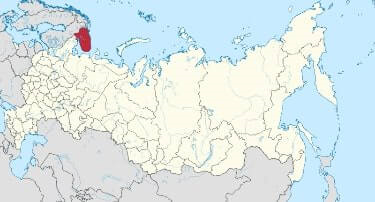
The Kola Peninsula in north-west Russia. (TUBS, from Wikimedia Commons)
- Volcanic eruption forms another source of obtaining direct information.
Indirect Sources of information about the Earth’s Interior
- Increase in pressure and temperature with depth
- Seismic waves
- Meteorites
- Gravitation
- Magnetic field
Increase in pressure and temperature with depth
- Gravitation and the diameter of the earth help in estimating pressure deep inside.
- Volcanic eruptions and existence of hot springs, geysers etc. point to an interior which is very hot.
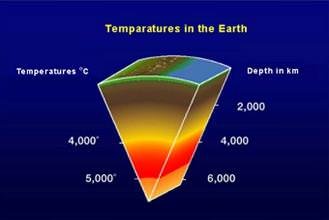
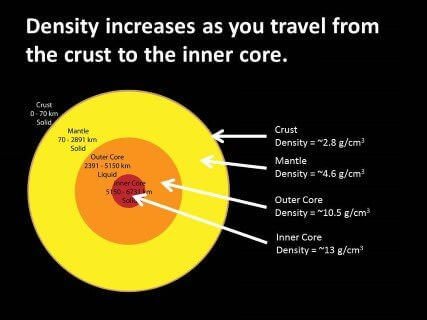
Sources of earth’s heatRadioactive decay
Nuclear fusion doesn’t occur inside the earth. For nuclear fusion to occur there must be far more pressure and temperature inside the earth. The earth is not massive enough to cause such conditions. Primordial heat
Tidal friction
|
Seismic waves
- They are the most important source available to understand the layered structure of the earth.
- The velocity of seismic waves changes as they travel through materials with different elasticity and density.
- The more elastic and denser the material is, the higher is the velocity.
- They also undergo refection or refraction when they come across materials with different densities.
- Earth’s internal structure can be understood by analysing the patterns of reflection, refraction and change in velocity of the seismic waves when they travel through it.
Meteorites
- Meteorites and Earth are born from the same nebular cloud. Thus, they are likely to have a similar internal structure.
- When meteoroids they fall to earth, their outer layer is burnt during their fall due to extreme friction and the inner core is exposed.
- The heavy material composition of their cores confirms the similar composition of the inner core of the earth.

Gravitation
- The gravitation force differs according to the mass of material. The uneven distribution of mass of material within the earth influences this value. Such a difference is called gravity anomaly.
- Gravity anomalies give us information about the distribution of mass in the crust of the earth.
Magnetic field
Last updated on April 26, 2024 11:37 PM




![PMF IAS Environment for UPSC 2022-23 [paperback] PMF IAS [Nov 30, 2021]…](https://pmfias.b-cdn.net/wp-content/uploads/2024/04/pmfiasenvironmentforupsc2022-23paperbackpmfiasnov302021.jpg)



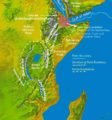
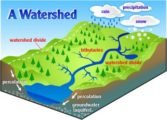

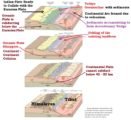







Dear PMF team
I m greatly indebted to u for ur amazing contributions for confused aspI rants like me. Kudos to u great work
Thank you
very nice
Really good
The Whole section of P and S wave has gotten removed somehow..Kindly update it…Thanks
Its there. Click on [seismic waves and shadow] link that’s available near social media share buttons. I have split the page into 2 to improve the load time.
OR
Use this URL
http://www.pmfias.com/earths-interior-seismic-waves-shadow-zone-p-waves-s-waves-l-waves/2/
Thanks a lot …God bless you
if s wave cannot pass through liquid then how it passed mantle
Mantle is not in liquid state. It is plastic (somewhere between solid and liquid but predominately solid).
thanx..it means only upper layer of core is liquid
sir i am tatally relying on your notes and videos for geography it will be sufficient or i have to read books also?
You need to follow my notes + Mrunal.org/geography + Regular current affairs. You may not get time to refer books. Just stick with the above websites.
thanxx sir…
Are all the geography NCERTs of 11-12 completely covered in these notes?
Yes.
Thanks.
And do we need to refer to GC Leong with these notes or is it also covered?
Covered. No need to go for GC.
Have you updated all the notes here sir?
Not updated since late 2016. But new updates coming by Mar 2019.
Sir if possible, update for mains 2018.
if not all, atleast the important ones.
Sorry. I don’t have enough time.
No problem sir, If I dont clear mains this time, I’ll buy them, print and read at slower pace.
Dear sir;
Greetings of the day!!
It great to introduce myself to you as B S Patil one among many UPSC aspirants of 2019 batch. Sir this is my first attempt and coming with a empty mind where I haven’t referred any NCERT books till now and I don’t have much time to do it. Here my query, is your notes covering all the the topics which is require for UPSC prelims, mains, and optional. If it so, doesn’t it require to refer any books apart from your notes.
Thank you
Best regards
B S patil
Hello B S Patil, my notes is not meant for Optional. It is only for GS.
NCERTs are already covered in my notes. So you don’t need to go through them.
For Geography, my notes + mrunal.org/geography + regular current affairs should be enough (for both prelims and mains).
Is it update for 2021 or not